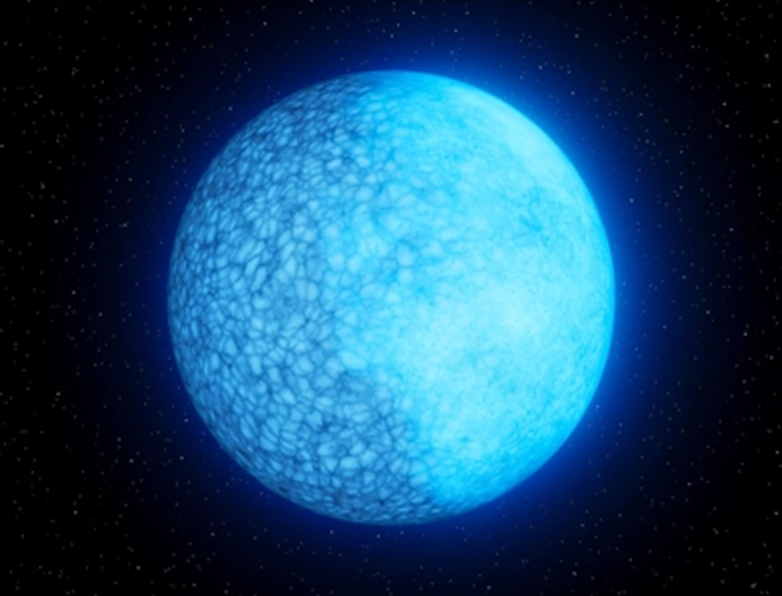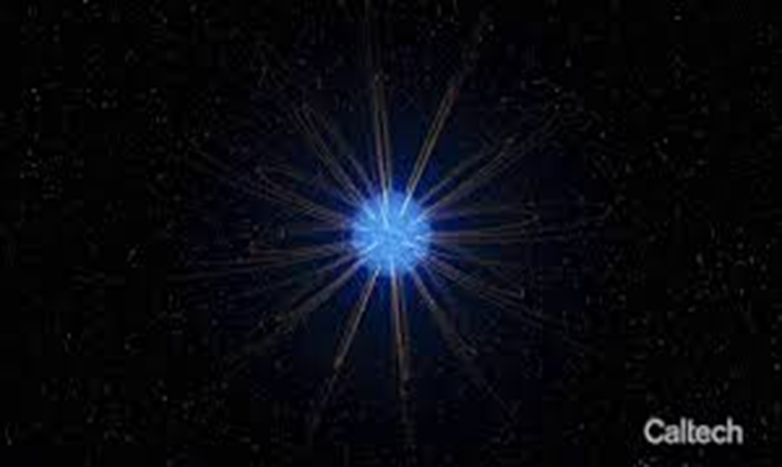Astronomers Discover Staggering Two-Faced Star Named 'Janus'

Named Janus after the two-faced Roman god, a recently discovered star has one side made up of helium and another of hydrogen. This extraordinary white dwarf was the subject of an article in the journal Nature.
"When I show the observations to people, they are amazed" , slips Ilaria Caiazzo, post-doctoral researcher at the Caltech institute, first author of the study published in the scientific journal Nature (July 19, 2023), quoted in a press release .
This observation is that of a "white dwarf". Quesako? Over time, any star first turns into a "red giant". Then, as its core contracts, it becomes a white dwarf – by the way, this is the fate that awaits our Sun , 5 billion years from now.
But "Janus", named after the two-faced god of Roman mythology , is not a white dwarf like the others.
But "Janus", named after the two-faced god of Roman mythology , is not a white dwarf like the others.
A "strongly magnetized" white dwarf
The mysterious star was discovered thanks to the Zwicky Transient Facility (ZTF), an instrument that scans the sky every night from the Palomar observatory of the California Institute of Technology (Caltech), near San Diego (United States).
Ilaria Caiazzo was looking for "strongly magnetized" white dwarfs , such as the celestial object known as ZTF J1901+1458, which she and her team had previously discovered. Another "candidate" then stood out for its rapid changes in brightness.
Complementary instruments – the CHIMERA at Palomar and the HiPERCAM at the Gran Telescopio Canarias on the Canary Islands – then revealed that Janus rotated on its axis every 15 minutes. Its temperature was also estimated at NASA's Neils Gehrels Swift Observatory: 35,000 kelvins, or about 35,000 degrees Celsius.

Destruction of silos in Odessa, threats against ships: Russia relaunches the "grain war"
On one side, hydrogen, on the other, helium
But above all, from the WM Keck observatory at the top of Mount Maunakea in Hawaii, astronomers have discovered the "double face" of the white dwarf thanks to a spectrometer.
This measuring tool distributes the light from the star in a rainbow of wavelengths corresponding to chemical fingerprints. The data revealed the presence of hydrogen when one side of the object was visible (with no sign of helium), and only helium when the other side was visible.

It now remains to explain this strange configuration. The team came up with a few theories. One of them is that we could be witnessing a rare phase in the evolution of white dwarfs. "Some go from hydrogen dominant to helium dominant on their surface ," says Dr. Caiazzo:
"We may have caught one of these white dwarfs in the act."
Following the formation of a white dwarf, the heavier elements sink to the core while the lighter elements – such as hydrogen – float to the surface. Over time, with cooling, the materials mix. The hydrogen dilutes inside, so the helium becomes more important.

Benjamin Franklin's clever techniques to thwart counterfeiters
Magnetic field theory
However, this does not answer the question: why such a difference on one side compared to the other? According to the team, the answer may lie in magnetic fields.
"The magnetic fields around cosmic bodies tend to be asymmetrical, that is to say they are stronger on one side" , explains the researcher in the press release. These "can prevent materials from mixing. Therefore, if the magnetic field is stronger on one side, there will be less mixing and therefore more hydrogen" , she concludes.
Another theory mentioned: magnetic fields could modify the pressure and density of atmospheric gases, "which would allow an 'ocean' of hydrogen to form where the magnetic fields are strongest" , suggests James Fuller, professor of theoretical astrophysics at Caltech and co-author of the study.
To solve this mystery, the team hopes to find more Janus-like white dwarfs through ZTF Sky Survey, which is said to be " very good at finding strange celestial objects."
Source: websites

